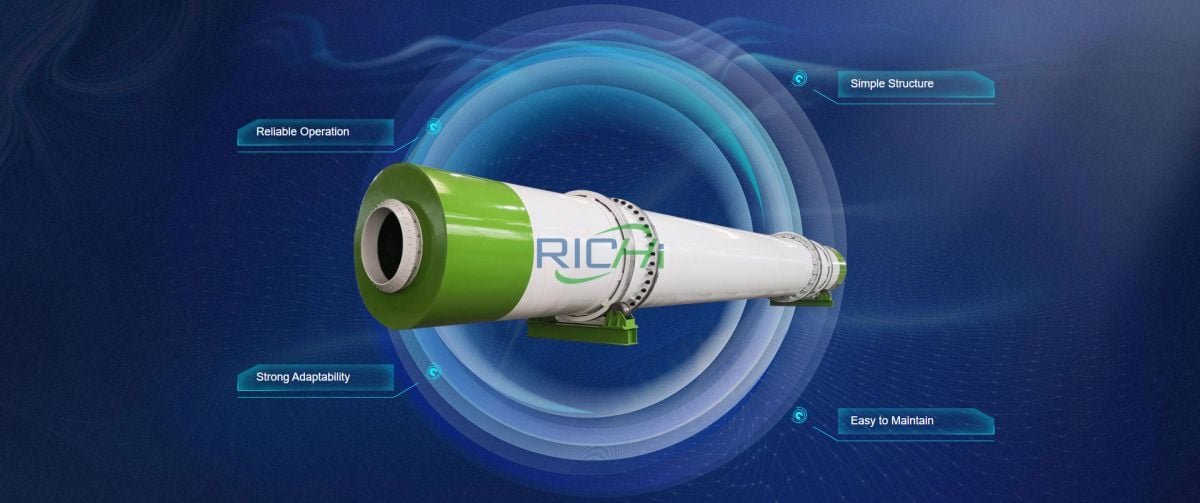Straw Pellet Making Machines are versatile and efficient devices designed to convert agricultural waste, primarily straw, into compact, high-density pellets. These machines are crucial in sustainable agriculture, waste management, and renewable energy production. This article explores the various uses and applications of Straw Pellet Making Machines, highlighting their importance in modern agricultural and industrial practices.
Biomass Fuel Production
One of the primary uses of Straw Pellet Making Machines is the production of biomass fuel:
- Renewable Energy Source: Straw pellets serve as a clean, renewable energy source for heating homes, powering industrial boilers, and generating electricity.
- Efficient Combustion: The dense, uniform nature of straw pellets allows for more efficient combustion compared to loose straw, resulting in higher energy output and lower emissions.
- Reduced Carbon Footprint: By utilizing agricultural waste, straw pellets help reduce reliance on fossil fuels, contributing to lower carbon emissions.
Agricultural Waste Management
Straw Pellet Making Machines offer an effective solution for managing agricultural waste:
- Waste Reduction: Converting excess straw into pellets significantly reduces the volume of agricultural waste, addressing disposal challenges.
- Preventing Field Burning: By providing an alternative use for straw, these machines help reduce the practice of field burning, which contributes to air pollution.
- Soil Conservation: Removing excess straw for pellet production can prevent over-accumulation on fields, which can interfere with subsequent planting.

Animal Feed Production
Straw pellets produced by these machines can be used in animal husbandry:
- Supplementary Feed: When mixed with other nutrients, straw pellets can serve as a cost-effective supplementary feed for livestock, especially ruminants.
- Improved Digestibility: The pelletizing process can enhance the digestibility of straw, making it a more efficient feed option.
- Storage and Transportation: Pelletized straw is easier to store and transport compared to loose straw, offering logistical advantages for farmers and feed suppliers.
Bedding Material for Livestock
Straw pellets make excellent bedding material for various animals:
- Absorbent Properties: The high absorbency of straw pellets makes them ideal for use in animal stalls and pens.
- Dust Reduction: Compared to loose straw, pellets produce less dust, creating a healthier environment for animals and handlers.
- Easy Waste Management: Soiled bedding made from straw pellets is easier to remove and can be composted or used as fertilizer.
Horticultural Applications
In horticulture and gardening, straw pellets have several uses:
- Mulching: When moistened, straw pellets expand and can be used as an effective, biodegradable mulch for plants.
- Soil Amendment: As they decompose, straw pellets add organic matter to the soil, improving its structure and water retention capacity.
- Hydroponic Growing Medium: Some gardeners use straw pellets as a growing medium in hydroponic systems.
Industrial Applications
Straw pellets have found applications in various industrial processes:
- Packaging Material: As an eco-friendly alternative to plastic-based packaging materials, straw pellets can be used as void fill or protective packaging.
- Absorbents: In industrial settings, straw pellets can be used as absorbents for spills and leaks, particularly for oil and chemical spills.
- Bioplastic Production: Some industries are exploring the use of straw pellets as a raw material in the production of biodegradable plastics. (Related post: straw pellet plant)
Erosion Control
Straw pellets play a role in environmental management and construction:
- Slope Stabilization: When used in erosion control blankets or mats, straw pellets help stabilize slopes and prevent soil erosion.
- Hydroseeding: Straw pellets can be included in hydroseeding mixtures to provide mulch and support seed germination in land reclamation projects.
Biofuel for Power Plants
Large-scale power generation facilities can utilize straw pellets:
- Co-firing with Coal: Many coal-fired power plants are incorporating straw pellets as a co-firing fuel to reduce their carbon emissions.
- Dedicated Biomass Power Plants: Some power plants are designed specifically to run on biomass fuels like straw pellets, providing renewable electricity to the grid.
Export Commodity
Straw pellets have become a valuable export commodity:
- International Demand: Countries with stringent renewable energy targets create a market for biomass fuels, including straw pellets.
- Value-Added Product: By converting low-value straw into pellets, farmers and processors can create a higher-value export product.
Research and Development
The production of straw pellets supports ongoing research in several fields:
- Bioenergy Research: Scientists use straw pellets in studies aimed at improving biomass energy efficiency and reducing emissions.
- Material Science: Research into new applications for straw-based materials often begins with pelletized forms of straw.
Conclusion
The Straw Pellet Making Machine serves as a crucial tool in the transition towards more sustainable agricultural practices and renewable energy production. By converting what was once considered waste into valuable products, these machines contribute to circular economy principles and help address multiple challenges in agriculture, energy, and environmental management.
The versatility of straw pellets, from their use as a clean-burning fuel to applications in animal husbandry and horticulture, underscores the importance of Straw Pellet Making Machines in modern industry. As the world continues to seek sustainable solutions to energy needs and waste management, the role of these machines is likely to grow, driving innovation in pellet production technology and expanding the range of applications for straw pellets.
Furthermore, the adoption of Straw Pellet Making Machines can have significant economic impacts on agricultural communities. By creating a market for agricultural residues, these machines offer farmers an additional revenue stream, enhancing the economic viability of farming operations while promoting environmental stewardship.
As research continues and new applications emerge, the Straw Pellet Making Machine stands as a testament to the potential of agricultural innovation in addressing global challenges of sustainability, waste reduction, and renewable energy production.










